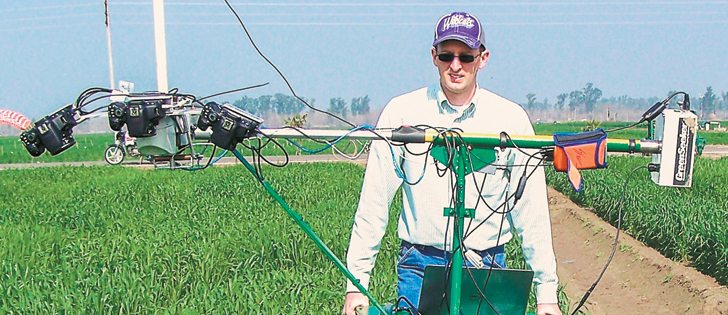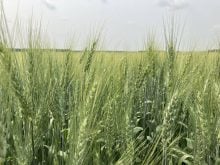Developing a new crop variety is a tedious, time-consuming task.
It’s long hours under a hot sun, clipboard in hand, bent over tens of thousands of plants in the plots, looking for the best one.
Phenotyping is definitely not fun in the sun.
Making subjective comparisons of thousands of strains opens the door to human error and can stretch the registration process out to a decade or longer.
The process of phenotyping is a systematic method of culling low-performance genetic strains while whittling the candidate list down to the very best of the very best to bring forward for registration.
Read Also

Volatile temperatures expected for this winter
DTN is forecasting a lot of temperature variability in the Canadian Prairies this winter. Precipitation should be close to average.
Thousands of strains start the contest, and only one goes up before the committee.
Plant breeders have turned to digital sensor technology in the past decade to hasten the process and make it more accurate. The faster you can judge and boot the duds, the quicker you can show off your best candidate for consideration.
Breeders are now using handheld GreenSeekers, normalized difference vegetation index cameras and leaf temperature sensors to log and quantify data in the quest for a better variety.
However, it still takes time to make the measurements and record the numbers that will be crunched later.
Enter the PhenoCart, developed by agronomists and engineers at Kansas State University.
While it appears to be nothing more than the back half of an old bicycle, a closer look reveals a GreenSeeker, GPS, three SLR cameras, a canopy temperature sensor and a plant height sensor.
It’s all wired to a computer that collates and geo-references the phenotype data.
“Larger sample sizes provide us with a better look at the factors we’re selecting for,” said KSU agronomist Jesse Poland, the driving force behind the PhenoCart.
“However, more samples slows down the whole phenotype process.”
Poland said KSU started thinking about a motorized cart to carry the phenotype payload, but decided it would rather have something lighter and more portable that could be used around the world.
As far Poland knows, the KSU PhenoCart is the only one of its kind anywhere.
“This is a new frontier in plant breeding and genetic work,” he said.
“There’s nothing commercially available that can take these kinds of measurements. We’re getting really high resolution data. We use this information to run a more efficient candidate selection process.”
The PhenoCart doesn’t use new types of sensors, but the number of parameters that it can measure, log and geo-reference in the exact same instant is what sets it apart.
However, Poland said the project is more complex than simply hanging a bunch of stuff on a bicycle frame.
“We had to develop new software to integrate all the sensors with the GPS,” he said.
“It does monitoring, measuring and GPS location. We’ve also built new analysis tools to run the phenotype data so we can make genetic decisions.
“We document vegetation index with our GreenSeeker, same as you would in nutrient management. We have an infrared thermometer for canopy temperature. We’ve added a plant height sensor.”
He said the three SLR cameras are now being used experimentally, looking closely at complex pheno characteristics such as susceptibility or resistance to leaf disease.
Detecting these factors early in the process gives breeders better information when deciding which strains stay and which are dumped.
Poland said the PhenoCart won’t be put a lot of summer students out of work.
“No, quite the opposite I think. The need for students will be as great as ever, but the focus will change. Instead of mindlessly taking notes in the field, they’ll be doing much more sophisticated work, focusing on data analysis, building prediction models and developing algorithms. They’re more valuable now than when they were just walking around taking measurements.”
He said the university has no plans to commercialize the Pheno-Cart. It has plant breeding partnerships with organizations around the world, and the device is already available to some of those researchers.
“This is publicly funded research, so we’re really just working on concept development,” he said.
“You can go out and buy all the source codes that run the machine and all the hardware. You can assemble your own PhenoCart. So there’s definitely opportunity if some company wants to pick it up and start building and marketing them.”
For more information, visit www.wheatgenetics.org.
















